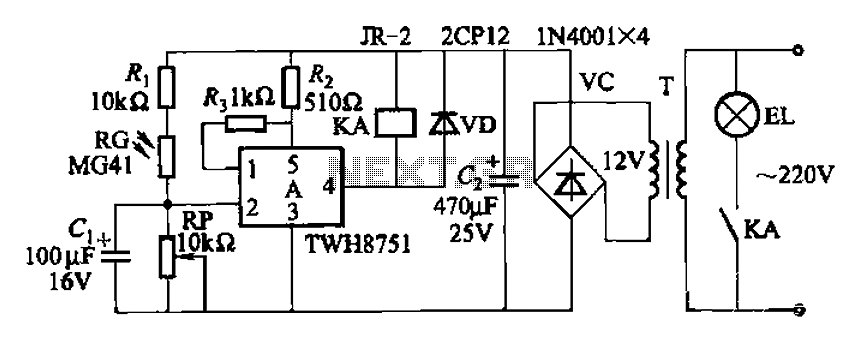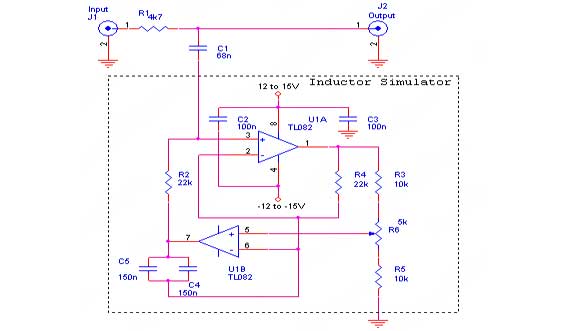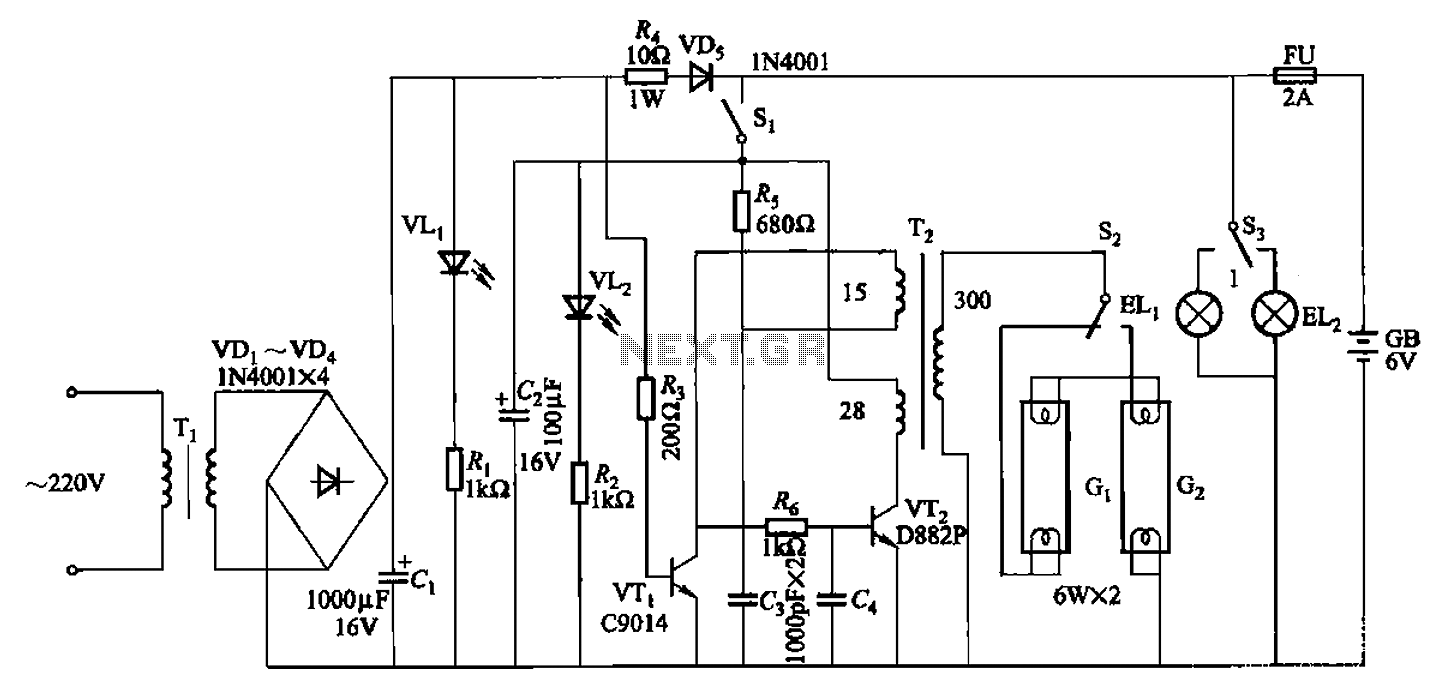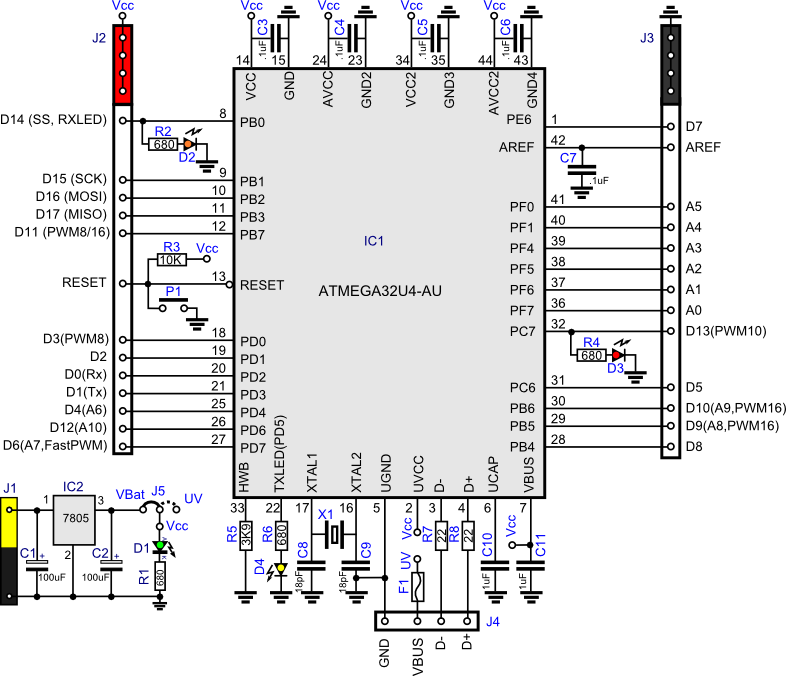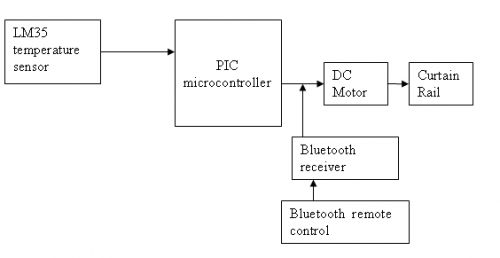
Single source emergency lighting system
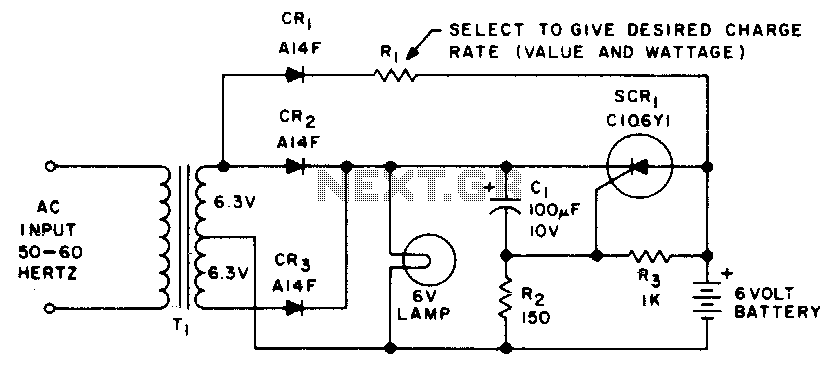
This emergency lighting system maintains a 6-volt battery at full charge and automatically switches from the AC supply to the battery.
The emergency lighting system is designed to ensure reliable illumination during power outages or failures. It consists of a 6-volt rechargeable battery, which serves as the primary power source when the main AC supply is interrupted.
The system incorporates a battery management circuit that continuously monitors the battery's voltage level, ensuring it remains fully charged while connected to the AC supply. This is typically achieved through a dedicated charging circuit that utilizes a transformer to step down the AC voltage, followed by a rectifier to convert the AC to DC, which is then used to charge the battery.
In the event of a power failure, the system employs a switching mechanism, often utilizing a relay or a solid-state switch, to automatically disconnect the AC supply and connect the battery to the load, which consists of the emergency lighting fixtures. This transition must occur seamlessly to provide uninterrupted lighting.
To enhance the system's reliability, additional features may include overcharge protection, which prevents the battery from being charged beyond its capacity, and low-voltage disconnect, which ensures the battery does not discharge below a critical level, thereby prolonging its lifespan.
LED indicators may also be integrated into the design to provide visual feedback regarding the system's operational status, such as indicating when the system is operating on battery power or when the battery is charging.
Overall, the emergency lighting system is a vital component in ensuring safety and visibility during unexpected power outages, making it an essential feature in both residential and commercial applications.This emergency lighting system maintains a 6 volt battery at full charge and switches automatically from the ac supply to the battery. 🔗 External reference
The emergency lighting system is designed to ensure reliable illumination during power outages or failures. It consists of a 6-volt rechargeable battery, which serves as the primary power source when the main AC supply is interrupted.
The system incorporates a battery management circuit that continuously monitors the battery's voltage level, ensuring it remains fully charged while connected to the AC supply. This is typically achieved through a dedicated charging circuit that utilizes a transformer to step down the AC voltage, followed by a rectifier to convert the AC to DC, which is then used to charge the battery.
In the event of a power failure, the system employs a switching mechanism, often utilizing a relay or a solid-state switch, to automatically disconnect the AC supply and connect the battery to the load, which consists of the emergency lighting fixtures. This transition must occur seamlessly to provide uninterrupted lighting.
To enhance the system's reliability, additional features may include overcharge protection, which prevents the battery from being charged beyond its capacity, and low-voltage disconnect, which ensures the battery does not discharge below a critical level, thereby prolonging its lifespan.
LED indicators may also be integrated into the design to provide visual feedback regarding the system's operational status, such as indicating when the system is operating on battery power or when the battery is charging.
Overall, the emergency lighting system is a vital component in ensuring safety and visibility during unexpected power outages, making it an essential feature in both residential and commercial applications.This emergency lighting system maintains a 6 volt battery at full charge and switches automatically from the ac supply to the battery. 🔗 External reference
